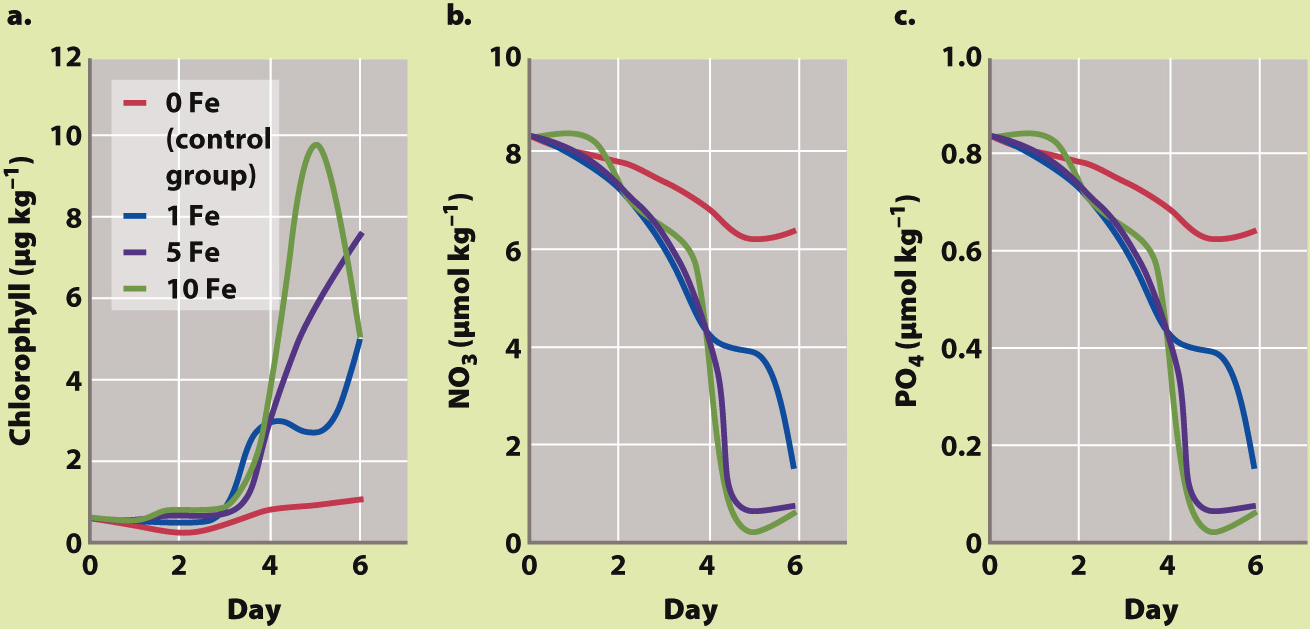HOW DO WE KNOW?
FIG. 48.20
Does iron limit primary production in some parts of the oceans?
BACKGROUND Nitrogen and phosphorus are nutrients that are thought to limit primary production in the oceans, and, consistent with this hypothesis, the concentrations of nitrate and phosphate in surface oceans are generally very low. Regionally, however, nitrogen and phosphorus concentrations are high, indicating that primary producers are not making use of all available nutrients.
HYPOTHESIS In some parts of the oceans, iron—
EXPERIMENT Biologists John Martin and Steve Fitzwater sailed to subarctic waters of the northeastern Pacific Ocean, where high nitrogen and phosphorus concentrations suggested limitation by another nutrient. They collected samples of seawater, along with its phytoplankton, and added small amounts of iron to different samples: 1, 5, or 10 nanomoles per kilogram of sample (in the control sample, no iron was added). As photosynthesis proceeded over the course of a week, the researchers made daily measurements of chlorophyll concentration (an indicator of photosynthetic rate), as well as of the concentrations of nitrate and phosphate in the sample treatments.

RESULTS As the figure shows, over the course of the experiments, samples to which iron was added showed increased chlorophyll concentration and decreased levels of nitrogen and phosphorus, with higher additions of iron generally showing more pronounced effects. Controls with no added iron showed little change over the course of the experiment.
CONCLUSION In samples from the northeastern Pacific Ocean, addition of iron increased rates of photosynthesis, with more uptake of nitrogen and phosphorus. This supports the hypothesis that, in these waters, iron and not nitrogen or phosphorus limits primary production.
FOLLOW-
SOURCE Martin, J. H., and S. E. Fitzwater. 1988. “Iron-